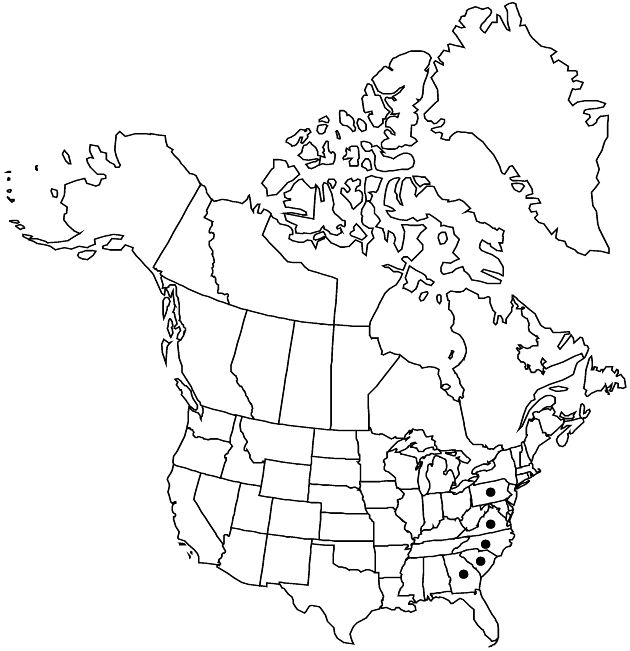Difference between revisions of "Echinacea laevigata"
J. Wash. Acad. Sci. 19: 273. 1929.
FNA>Volume Importer |
FNA>Volume Importer |
(No difference)
| |
Revision as of 18:47, 24 September 2019
Plants 35–110 cm (roots fusiform, ± branched). Herbage (glaucous) mostly glabrous (leaves sometimes sparsely hairy abaxially). Stems green. Basal leaves: petioles 4–26 cm; blades 3- or 5-nerved, elliptic to lanceolate-ovate, 10–50 × 3–6.5 cm, bases broadly cuneate to rounded, margins usually serrate or dentate. Peduncles 10–40 cm. Phyllaries lanceolate, 3–15 × 2–3(–5) mm. Receptacles: paleae 7–12 mm, tips orange to brownish purple-tipped, often incurved, sharp-pointed. Ray corollas pink to purple, laminae spreading to reflexed, 35–80 × 3–7 mm, sparsely hairy abaxially. Discs conic to spheric, 15–30 × 15–40 mm. Disc corollas 8–9 mm, lobes purple to greenish (usually erect). Cypselae tan, disc cypselae tan, banded, 4–5 mm, usually glabrous (ray cypselae sometimes hairy on angles); pappi to 1.2 mm (teeth unequal). 2n = 22.
Phenology: Flowering late spring–early summer.
Habitat: Well-drained soils, open wooded hillsides, fields
Elevation: 100–1100 m
Distribution

Ga., N.C., Pa., S.C., Va.
Discussion
Of conservation concern.
Echinacea laevigata was historically present in Pennsylvania but is now thought to be extirpated; its occurrence in Maryland has not been confirmed; reports of its presence in Alabama and Arkansas are most likely based on misidentifications. It is in the Center for Plant Conservation’s National Collection of Endangered Plants.
Selected References
None.